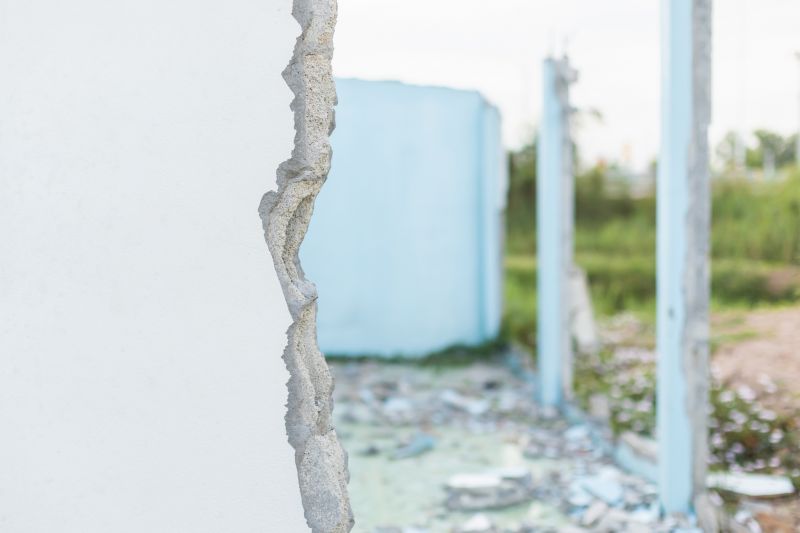Leading Concrete Repair Tools and Materials for Lasting Fixes
Identify the most trusted products that help achieve durable repairs and restore your concrete surfaces with confidence.
 Concrete repairs are a common necessity for maintaining the integrity and appearance of various structures, including driveways, sidewalks, foundations, and patios. When selecting products for concrete repair, it is important to consider the specific type of damage, the location of the repair, and the desired longevity of the fix. From small cracks to larger surface damages, there are a variety of specialized products designed to address different issues effectively.
Concrete repairs are a common necessity for maintaining the integrity and appearance of various structures, including driveways, sidewalks, foundations, and patios. When selecting products for concrete repair, it is important to consider the specific type of damage, the location of the repair, and the desired longevity of the fix. From small cracks to larger surface damages, there are a variety of specialized products designed to address different issues effectively.
Top Overall Option
Concrete Patch and Repair Compound
A versatile concrete patch and repair compound offers a user-friendly solution for a wide range of surface damages. It typically features a ready-mix formulation that adheres well to existing concrete, filling cracks and surface imperfections effectively. This type of product is suitable for both small and larger repairs, providing a durable and weather-resistant finish. Proper surface preparation and application according to instructions can help ensure a seamless repair that maintains the structural integrity of the concrete surface.
Types of Products For Concrete Repairs
Concrete Crack Sealants
Flexible sealants designed to fill and seal cracks, preventing water infiltration and further damage.
Polyurethane Foam Fillers
Expanding foam products used to fill larger cracks and voids with high adhesion properties.
Epoxy Concrete Repair Kits
Two-part epoxy systems ideal for structural repairs and bonding broken concrete pieces.
Polymer Modified Cement Mixes
Ready-mixed or dry mixes enhanced with polymers for improved bonding and flexibility.
Concrete Patching Mixes
Pre-mixed compounds suitable for patching surface damages and minor holes.
Surface Restorers and Resurfacers
Products that can be applied over existing concrete to restore appearance and surface smoothness.
Waterproofing Sealers
Sealants that provide a protective barrier against moisture penetration after repairs.
Bonding Agents
Primers that improve adhesion between old and new concrete layers.
Concrete Leveling Compounds
Materials used to level uneven surfaces and raise sunken concrete slabs.
Fast-Setting Repair Mortars
Quick-curing mortars suitable for urgent repairs requiring minimal downtime.
Flexible Repair Sealants
Sealants that accommodate slight movements in concrete structures without cracking.
Crack Filler Sticks
Convenient, portable sticks for small cracks and surface imperfections.
Concrete Resurfacing Products
Thin overlays that can renew worn or damaged concrete surfaces.
Expansion Joint Fillers
Materials designed to fill and protect expansion joints in concrete slabs.
Polymer-Modified Grouts
High-performance grouts for filling larger voids and underpinning repairs.
Popular Choices
Widely used for sealing small to medium cracks to prevent water intrusion.
Commonly selected for structural bonding and surface repairs.
Popular for filling large cracks and voids with high expansion capacity.
Frequently chosen for patching holes and surface imperfections.
Often used to improve appearance and smoothness of worn surfaces.
Commonly applied after repairs to protect against moisture damage.
Selected to enhance adhesion between existing and new concrete layers.
Preferred for urgent repairs requiring quick curing.
Convenient for quick fixes on small cracks.
Popular for renewing worn or damaged surfaces with minimal prep.
Used to protect joints and accommodate movement in slabs.
In Fort Collins, CO, where seasonal weather fluctuations can impact concrete surfaces, choosing the right repair products can help ensure durability and stability. Proper surface preparation is crucial before applying any repair material, which may include cleaning, removing loose debris, and sometimes roughening the surface for better adhesion. Many repair products are formulated to bond well with existing concrete, providing a seamless and long-lasting repair.
It's also essential to consider the ease of application and drying time. Some products are suitable for quick fixes, while others are designed for more extensive repairs that require mixing and curing over several days. Using the appropriate tools and following manufacturer instructions can significantly influence the success of the repair. Additionally, selecting products that match the color and texture of the existing concrete can help achieve a more uniform appearance.
Overall, investing in quality repair products and understanding their proper use can extend the lifespan of concrete surfaces and help maintain their safety and aesthetic appeal. Whether addressing minor cracks or major surface damage, there are versatile options available to meet various repair needs in Fort Collins, CO.
Key Buying Considerations
- Identify the type and extent of damage to select the appropriate product.
- Consider whether the repair requires structural bonding or surface filling.
- Check if the product is suitable for the specific location, such as exterior or interior surfaces.
- Review drying and curing times to plan your repair schedule effectively.
- Ensure compatibility with existing concrete and any previous repair materials.
- Evaluate the flexibility of the product to accommodate slight movements or expansion.
- Look for weather resistance if repairs are outdoors and exposed to the elements.
- Determine the ease of application based on your skill level and available tools.
- Consider color-matching options for aesthetic consistency.
- Verify the product’s capacity to bond with old concrete for long-term durability.
- Assess whether the product is suitable for small cracks or larger surface repairs.
- Review manufacturer instructions for surface preparation and application techniques.
- Check for any safety precautions or protective gear requirements during application.
- Determine if the product is suitable for use in high-traffic or load-bearing areas.
- Look for products with good adhesion and minimal shrinkage after curing.
